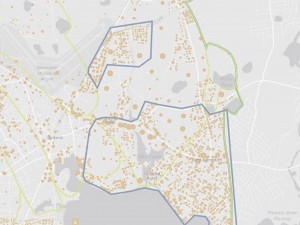The Cape Cod Area Wide Water Quality Management Plan (208 Plan) acknowledged the need to explore a variety of strategies to meet nutrient management goals. These techniques include conventional and non-traditional technologies at scales that span from the individual lot level to community and watershed-based solutions. The Technologies Matrix (Tech Matrix) is a single source where updated data can be compiled for the entire suite of nutrient management technologies being evaluated. All of the technologies in the Tech Matrix have shown some promise for being used to manage nitrogen; however, many are yet untested on Cape Cod or have been deployed at scales smaller than might be required in a watershed-based plan.

The technologies and approaches included in the Technologies Matrix address nutrients by means of reduction, remediation, and restoration and are implementable in scales ranging from on-site, to neighborhood, watershed, and Cape-wide.
The Tech Matrix was originally published in 2015 after two years of research by Cape Cod Commission staff and private consultants, review by a panel of experts, and vetting by State, Federal, and other stakeholders. A recommendation of the 208 Plan is to regularly revisit and update the Tech Matrix to ensure that it incorporates new data as it becomes available and reflects the best scientific understanding of the technologies being considered.
In 2017 and 2020, the Commission led reviews of and updates to the Technologies Matrix; leading to changes in the technologies presented, the nitrogen removal efficiencies associated with the various technologies, siting considerations, and other edits and additions. A committee of researchers, government staff, and technical experts participated as part of each public review process.
Using the Technologies Matrix
The Technologies Matrix is a planning aid and is not meant to replace the detailed analysis and engineering components of a watershed management solution. When referencing the Technologies Matrix, the user should understand watershed-wide conditions when selecting technologies to be evaluated as part of a watershed scenario. As an example, the unit costs for decentralized wastewater treatment options that utilize on-site or local disposal must be combined with an estimate of the additional nitrogen that must be removed to offset the disposal of treated effluent within the same watershed. Data within the Matrix should be employed strategically and with an understanding of the opportunities and constraints that exist within the planning area.
One feature of the Tech Matrix is a status check of piloting and DEP approval for each technology. Not all non-traditional options have been tested on Cape Cod or in Massachusetts environments, and questions remain about their nitrogen-management potential. While cost and performance are important, the feasibility to permit and implement a technology at a specific site, whether for environmental or social-acceptability concerns, will be important considerations. Whenever utilizing Tech Matrix data, care should be taken to identify site specific characteristics and limitations for a particular technology.
DOWNLOADS
Contact
-
Tim Pasakarnistim.pasakarnis@capecodcommission.org




